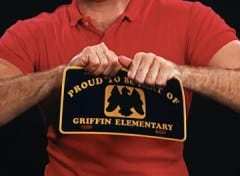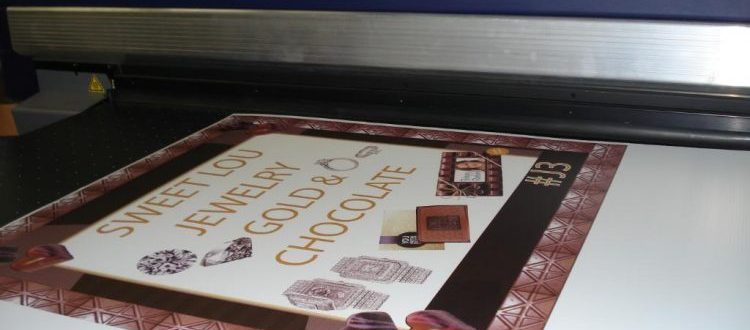In my last post, I gave you a thumbnail sketch of what it takes for companies that make sign prints using the screen printing process. This time I will deal more specifically with the various types.
There is a specific ink set for screen printing plastic displays, as there is for vinyl, glass, or wood items. If you’re going to make screen-printed pvc or plastic yard graphic signage, you’d need to contact your ink supplier to ask what type of ink is best for the various materials you’ll be using in the production process. Two major ink brands we’ve used in the past are Naz-Dar™ and Sericol™, though there are undoubtedly other good inks on the market that visual graphic makers use.
Available Plastic Signs That Will Look Like a Million Bucks
While there are many types of plastic that sign prints can be made with, I’ll cover a few of the most popular types sign makers use.
1) (Drum roll) – Corrugated Plastic, or more technically, fluted Polypropylene – fluted polypro for short.

Brand names included Coroplast™, Plasticor™, and Corex™, among other names. Because fluted polypro is a polypropylene plastic, it doesn’t easily accept ink, but due to it’s cost-effectiveness, the manufacturers of this plastic came up with “corona-treating” to make the plastic receptive to ink for up to a year. Corona-treating is essentially a heat treatment of the surface of the plastic to make it ink receptive so you can make your sigange on this very cheap material.
Corrugated plastic is a non-yellowing plastic that’s used mostly outdoors, but also can be used indoors, although because the flutes are somewhat visible on your sign prints, it’s not favored for close-up viewing. Uses for these include political, real estate, bootleg, directional, yard or garage sale, property markers, warning, and towing signs, and a host of other uses I’m not going to take the time to mention here (besides, I just can’t remember everything I’ve seen corrugated plastic used for).
Fluted polypropylene also comes in a variety of thicknesses, the most popular being 4mm and 6mm. It’s also readily available in 2mm, 3mm, 8mm 10mm, and 12mm thicknesses. Corrugated plastic is also quite chemical resistant. We used to clean ink off the plastic using lacquer thinner or MEK (methylethyl ketone) with no damage to the plastic. You cannot due this with polystyrene or polycarbonate plastic print displays.
2) PVC, or technically, Polyvinyl Chloride.
It is a solid, smooth, non-yellowing plastic that also has a variety of use and thicknesses. Because it is solid, it is also costlier than corrugated plastic. It comes in a variety of thicknesses up to 1/2″ thick, although the 1/8″ or 4mm thickness is probably the most popular for screen pressing.
PVC is durable in cold weather as well. It is considered shatter-resistant to around negative 20°F (polypropylene is similar, but may be resistant at even colder temps). They may be used for real estate, fence markers, point-of-purchase (because of its smooth finish), and warning signs (also known as OSHA).
3) Another popular plastic for interior usage is Polystyrene.
Because it yellows (although there are now non-yellowing polystyrene sheets available), it is more often used for indoor, and because you can purchase it as thin as .02″ thickness, it is popular for laminating digital graphics for retail and trade show displays.
Other ones we’ve used polystyrene for are interior warning (OSHA), real estate (if both sides are covered with a laminated durable digital print), and point of purchase displays.
4) The last type of plastic I’ll cover for is Polyethylene.
Polyethylene (PE) and hi-density polyethylene (HDPE) is a durable, cold-resistant, non-yellowing smooth plastic that accepts the appropriate inks or digital prints nicely. Popular thicknesses for this material are 1/16″ and 1/8″, but it can be purchased readily up to 1/2″ thick. You can purchase thicker materials from some manufacturers, but you’d likely have to place a minimum purchase of 50,000 lbs or more.
PE or HDPE types include real estate, warning, and interior sigange and displays. Because it is a smooth and attractive plastic, it can be used in many ways not mentioned here.
Plastic visual graphics – inexpensive, durable, attractive! In addition, check out some classy sign prints displays to have a view of how they seem like. See here: https://www.visigraph.com/signs-letters/
Popular Posts:




